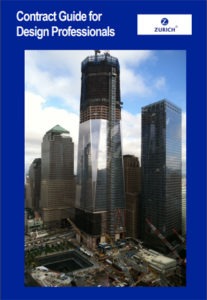In a case where an engineering firm provided design services for the rehabilitation of a bridge, the professional services were completed when the plans were delivered to the City in 2005. The bridge reconstruction was completed in 2007, and the City discovered cracks in December of that year and reported them to the engineer in March 2008. The engineer engaged another engineering firm to review its design and that firm identified certain errors and recommended repairs which the defendant engineer performed at the request of the City. Subsequently, the City found more cracks and asked the defendant engineer to perform and pay for those repairs. Because the engineer declined to do so, the City filed suit in April 2009 alleging breach of contract and negligence. A motion of summary judgment was granted for the engineer (and affirmed on appeal) based on the applicability of the 3 year statute of limitations for professional malpractice actions, which the court found accrued no later than November 2005.
The court concluded that the 3 year negligence statute applied “regardless of whether the theory is based in tort or in a breach of contract.” And the court rejected the City’s argument that the cause of action did not accrue (and the statute did not begin to run) until construction of the bridge was complete, and stated instead that “Ordinarily, ‘a negligence claim for professional malpractice against an engineer or architect accrues upon the completion of performance under the contract and the consequent termination of the parties’ professional relationship.’” As support for extending the time period, the City argued that a contract provision required the engineer to “provide design response to unanticipated or changed field conditions, analyze and participate in proposed design changes, and interpret design plans” if certain conditions occurred during construction. The point of this argument by the City was to fit this situation into a previous holding by the court in the case of Town of Wawarsing, 855 NYS 2d 691 (2008), where the court found the statute of limitations was extended for a 12 month period after substantial completion, during which the parties’ contract obligated an engineer to provide certain review and corrective services. This current situation is different, concluded the court, because the repair design services performed by the engineer did not follow continuously from the date of its services but rather occurred two years later and thus constituted what the court called a “resumption, rather than a continuation, of their previous professional relationship.” Finally, the court rejected the City’s argument that the engineer was equitably estopped from relying on the statute of limitations. The court stated that the doctrine only applies where a party is prevented from filing an action in time due to reasonable reliance on deception, fraud or misrepresentations by the other party. That was not the case here, concluded the court. City of Binghamton v. Hawk Engineering, P.C., 925 NYS 2d 705 (2011).
About the author: Article written by J. Kent Holland, Jr., a construction lawyer located in Tysons Corner, Virginia, with a national practice (formerly with Wickwire Gavin, P.C. and now with Construction Risk Counsel, PLLC) representing design professionals, contractors and project owners. He is founder and president of a consulting firm, ConstructionRisk, LLC, providing consulting services to owners, design professionals, contractors and attorneys on construction projects. He is publisher of ConstructionRisk.com Report and may be reached at Kent@ConstructionRisk.com or by calling 703-623-1932. This article is published in ConstructionRisk.com Report, Vol. 14, No.3 (Mar 2012).
Copyright 2012, ConstructionRisk.com, LLC


Connect